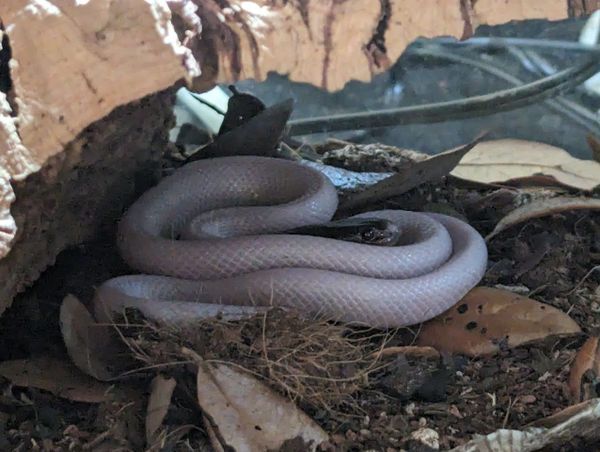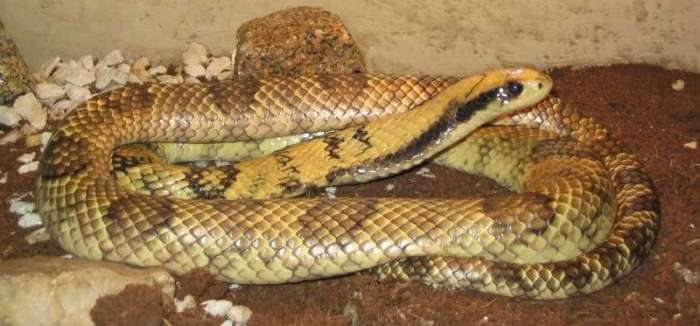Where Do Reptiles Go in the Winter?
Snakes have unique strategies to survive the winter. During this time, they undergo a state of inactivity called brumation.

Winter Patterns of Reptiles
Hibernation Strategies of Snakes
Snakes have unique strategies to survive the winter. During this time, they undergo a state of inactivity called brumation. Unlike mammals and birds, snakes do not lower their body temperature significantly. Instead, they find a sheltered spot, such as a burrow or rock crevice, where they can remain relatively warm. Snakes reduce their metabolic rate and conserve energy by slowing down their breathing and heart rate. This allows them to survive for long periods without food or water.
Here are some interesting facts about snake brumation:
- Snakes may gather in large groups to survive the winter together.
- Some snake species, like the garter snake, may hibernate in communal dens with other reptiles and amphibians.
- Snakes may emerge from hibernation on warm winter days to bask in the sun and increase their body temperature.
Important Tip: If you come across a snake during winter, it is best to observe from a distance and avoid disturbing it.
Important Tip: If your captive pet reptile goes into brumation, it is best to observe from a distance and avoid disturbing it.
Odd Beliefs in the Reptile Hobby Itself
There is a very strange belief in some corners of the internet, particularly on Facebook in groups like Reptile Lighting and Advancing Herp Husbandry, that suggest things like under ground can never be warmer than the surface. This is patently, and obviously, false. Considering anywhere above the 40th parallel, which includes the US, has insects, reptiles, and other mammals that survive temperatures in the single digits.
Some insects and animals, including reptiles, survive the winter in composting material. The composting process raises the temperature while the surface is much, much colder.
This is just an example of reptile content creators, bloggers, and Facebook admins trying to get affiliation, favor, free products, and even sponsoring by a lighting company for insisting on the usage of incandescent lamps. It is an obviously incorrect belief.
Winter Behavior of Turtles
During winter turtles may find shelter usually in the mud at the bottom of water bodies. The turtles mate in spring and autumn. Females dig nests on land and lay their eggs. Turtles are cold-blooded animals, so they enter a state called brumation during the winter. Brumation is similar to hibernation in warm-blooded animals, where their metabolism slows down, and they become less active. This helps them conserve energy and survive the cold temperatures. Turtles stay in brumation until the onset of more favorable conditions in spring.
Conclusion
In conclusion, reptiles have fascinating ways of coping with the cold winter months. While some reptiles, like rattlesnakes, seek refuge in animal dens or under structures to find warmth, others, like wood frogs, undergo a unique form of hibernation known as brumation. During brumation, these frogs freeze solid and rely on sugary glucose to protect their cells. It is important to note that reptiles, unlike mammals, do not hibernate in the traditional sense. They may emerge from their dormant state on warm days to bask in the sun. Overall, the winter survival strategies of reptiles are diverse and remarkable.
Frequently Asked Questions
Where do reptiles go in the winter?
Reptiles have different strategies for surviving the winter. Some reptiles, like snakes, go into a state of brumation, which is similar to hibernation. They find sheltered areas, such as underground burrows or rock crevices, where they can stay dormant and conserve energy. Other reptiles, like turtles, may bury themselves in mud or hibernate in bodies of water. Each species has its own unique way of coping with the cold temperatures.
Do reptiles eat during the winter?
Most reptiles reduce their activity and metabolism during the winter, so their food intake is significantly reduced or even halted. Snakes, for example, can go for several months without eating during brumation. Turtles may eat very little or not at all while hibernating. It's important for reptiles to conserve energy during the winter, so their bodies prioritize survival over feeding.
What happens if a reptile is exposed to cold temperatures?
Reptiles are ectothermic, which means their body temperature is regulated by the environment. If a reptile is exposed to extremely cold temperatures for a prolonged period, it can lead to hypothermia and even death. That's why reptiles have evolved various strategies to survive the winter, such as finding sheltered areas and slowing down their metabolism. It's crucial to provide appropriate winter habitats for pet reptiles to ensure their well-being.





